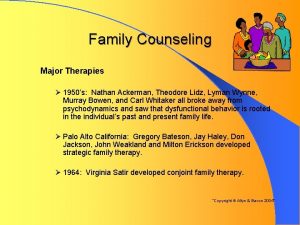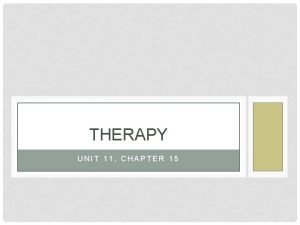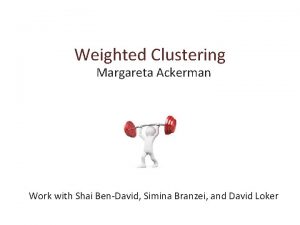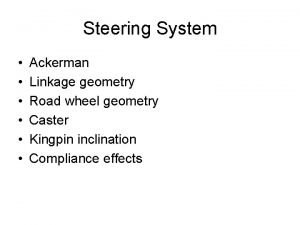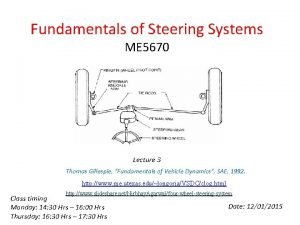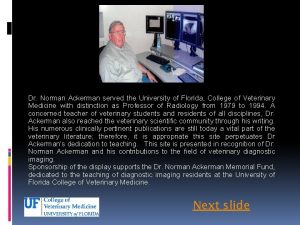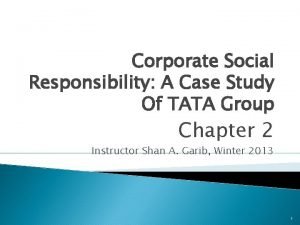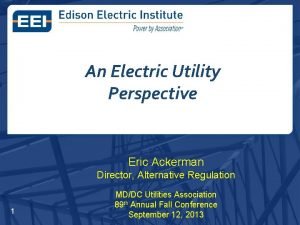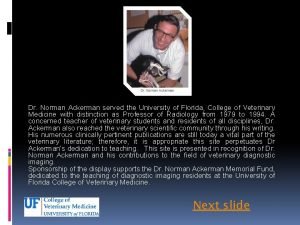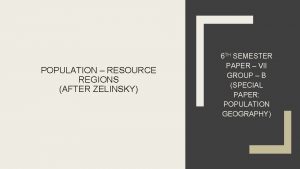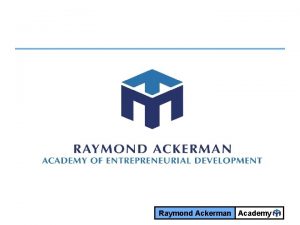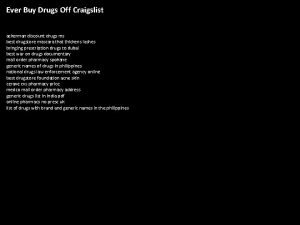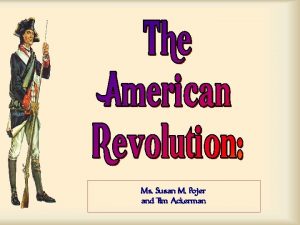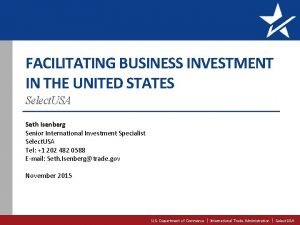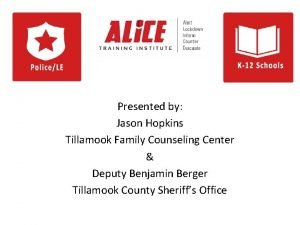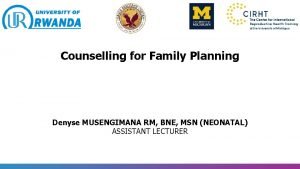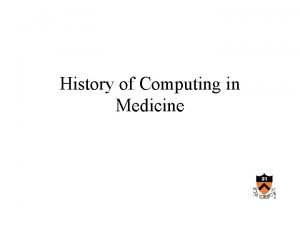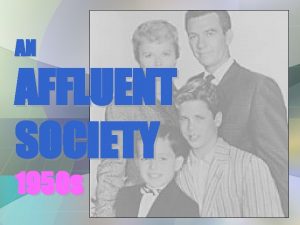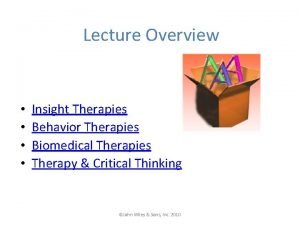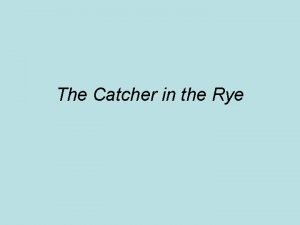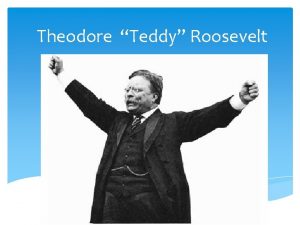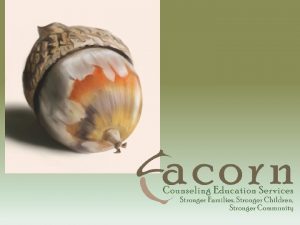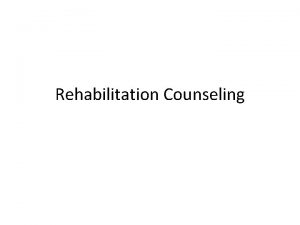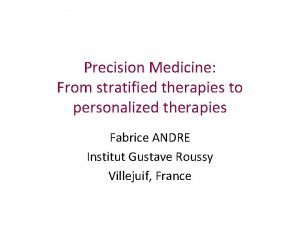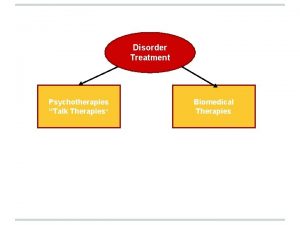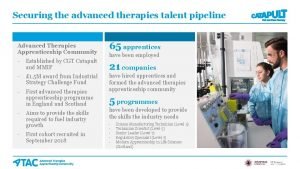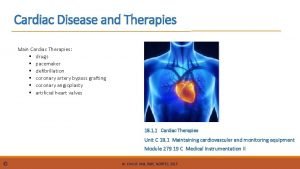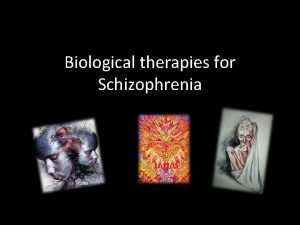Family Counseling Major Therapies 1950s Nathan Ackerman Theodore





















- Slides: 21

Family Counseling Major Therapies Ø 1950’s: Nathan Ackerman, Theodore Lidz, Lyman Wynne, Murray Bowen, and Carl Whitaker all broke away from psychodynamics and saw that dysfunctional behavior is rooted in the individual’s past and present family life. Ø Palo Alto California: Gregory Bateson, Jay Haley, Don Jackson, John Weakland Milton Erickson developed strategic family therapy. Ø 1964: Virginia Satir developed conjoint family therapy. “Copyright © Allyn & Bacon 2004”

Family Counseling Major Therapies (continued) Ø Salvador Minuchin: Developed structural family therapy. Ø Murray Bowen: Developed transgenerational family therapy. Ø Carl Whitaker: Developed experiential family therapy. “Copyright © Allyn & Bacon 2004”

Family Counseling Diagnosis of Family Dysfunction Ø Good family functioning is based on diversity. Ø Poor family functioning is a result of rigidity and narrowness. Ø The goal of therapy is to offer more complexity rather than provide an explanation as to the family’s dysfunction. Ø Pathology is looked at in the pattern of interactions among people. “Copyright © Allyn & Bacon 2004”

Family Counseling Diagnosis of Family Dysfunction (continued) Ø Counselors look for circular causality and not linear causality. Ø Feelings are not as relevant as actions. Ø Focus of therapy is not insight but behavioral change. “Copyright © Allyn & Bacon 2004”

Family Counseling Family Life Cycle Stages Ø Single young adult leaves home. Ø Formation of a family through marriage. Ø Families with young children. Ø Families with adolescents. Ø Launching children. Children move out. Ø Empty nest. “Copyright © Allyn & Bacon 2004”

Family Counseling Family Life Cycle Ø Family dysfunction often is a result of unmet family developmental tasks. Ø Family life cycle changes are a major source of stress and disequilibrium for families. Ø As families grow, there are developmental tasks that are required; when a family negotiates these successfully family roles and structures change. Ø When the family does not or can not accommodate these changes, stress and symptomatology will occur. “Copyright © Allyn & Bacon 2004”

Family Counseling Family Life Cycle (continued) Ø It is not the normal difficulties that create the problem but rather the chronic mishandling of problems over time. Ø Denying the need for change and treating normal family development as a problem or striving for perfection are all catalysts for family dysfunction. Ø Remarried families can have a lot of difficulty with the family life cycle. This happens when an individual’s development is out of sync with the development of the family. “Copyright © Allyn & Bacon 2004”

Family Counseling Fusion Ø People are fused or enmeshed when they are unable to think or act independently. Ø People who are not fused are autonomous and have emotional separation from their family. Ø A person’s level of differentiation is often related to his or her parents’ level of differentiation. It seems to be a transgenerational phenomena. “Copyright © Allyn & Bacon 2004”

Family Counseling Fusion (continued) Ø People with low levels of differentiation are more reactive to environmental stressors. When under stress they are more likely to try to resolve it by: – – Withdrawal Conflict Dysfunction Triangulation “Copyright © Allyn & Bacon 2004”

Family Counseling Boundaries Ø Boundaries are implicit family rules that determine who gets to talk to whom and what can be talked about. Ø When there are no rules there is a free for all regarding who talks to whom and everyone gets to hear about the thoughts and feelings of every other family member. Ø When this happens, families become fused or enmeshed. Ø When the rules are too ridged, families become disengaged. “Copyright © Allyn & Bacon 2004”

Family Counseling Dysfunctional Sequences Ø Family dysfunction can be caused by behavioral sequences that are rigid and repetitive. Ø Unless something breaks up the dysfunctional pattern, it can continue indefinitely. Ø There is no blame on any one family member, each participant is equally involved. “Copyright © Allyn & Bacon 2004”

Family Counseling Other Family Problems Ø Hierarchy: Problems occur when there is no hierarchy or if it is ambiguous or culturally inappropriate. Ø Communication: When communication is unclear, inadequate, confusing, incongruent etc. , it creates problems. Ø Low Self-Esteem: Problems arise when marital partners both have low self-esteem and are intolerant of each other’s differences and seek to raise their self-esteem though their children “Copyright © Allyn & Bacon 2004”

Family Counseling Other Family Problems (continued) Ø Family of Origin: When there is conflict over which family of origin to model. Ø Narrow and Rigid Beliefs and Self-Percepts: When there is inflexibility in patterned behavior that results from internal rules that prescribe rigid choices. “Copyright © Allyn & Bacon 2004”

Family Counseling The Initial Interview Ø Presession Planning: The therapist determines in advance who will attend the session. Ø The Joining Stage: The therapist joins with the family, taking on their affective tone, tempo, language and structure. Ø The Problem Statement Stage: Don’t begin with the identified patient. Usually it is the adult who has the least involvement with the problem that is addressed first. “When therapy is over, how will your family be different? ” “Copyright © Allyn & Bacon 2004”

Family Counseling The Initial Interview (continued) Ø The Interaction Stage: The therapist focuses in on determining the patterns of interaction sustaining the problem. Ø In-Session Conference: The therapist leaves the family for a few minutes and confers with observers or takes a moment alone to think about what has been said and how that relates to therapist's hypothesis regarding the problem. Ø Goal Setting Stage: The therapist reaches an agreement with the family on a solvable problem, stated in a behavioral term so that all involved will know when the problem has been solved. “Copyright © Allyn & Bacon 2004”

Family Counseling The Initial Interview (continued) Ø Ending Stage: The therapist sets the next appointment and indicates which family members will be present. Ø Postsession: When working with a team, a postsession debriefing should occur to produce feedback regarding the team’s perceptions. If working alone, then this is the time the counselor records his or her own impressions. “Copyright © Allyn & Bacon 2004”

Family Counseling Family Therapy Techniques Ø Circular Questioning: The same question is asked of each family member. Ø Reframing: The problem must be put into solvable, behavioral terms, be referenced as a family problem and not just the problem of one family member, and be put into positive terms. Ø Giving Directives: Creating or selecting an intervention that will impact the presenting problem. “Copyright © Allyn & Bacon 2004”

Family Counseling Family Therapy Techniques Ø Ordeals: An ordeal is a behavior that is more obnoxious, frustrating, and time consuming than the behavior that is considered the symptom. When the symptom behavior occurs, the family performs the ordeal. Ø Rituals: Symbolic acts that help the family move. (e. g. burying a box that contains family anger. ) Ø Ambiguous Assignments: Helps break down linear thinking and causes the family to be more creative in problem solving. “Copyright © Allyn & Bacon 2004”

Family Counseling Family Therapy Techniques Ø Family Sculpting: Examines power and closeness in a family by asking each family member to physically arrange all other family members in order of relationships. Ø Genogram: Gives a picture of three or more generations (like a family tree) and notes important family dynamics, rules, patterns, mental health issues, etc. Ø Reenactment: Asking the family to act out a situation rather than describe it verbally. “Copyright © Allyn & Bacon 2004”

Family Counseling Professional Issues Ø Specialization or Profession: There is a debate as to whether this is a specialization within the profession or a profession in its own right. Ø Professional Associations: American Association for Marriage and Family Therapy (AAMFT) was founded in 1942. The American Counseling Association division is the International Association of Marriage and Family Counselors (IAMFC). Ø Licensure/Certification: Forty-two states have certification or licensure laws. State-to-state licensure reciprocity is being looked at. National certification is also available. “Copyright © Allyn & Bacon 2004”

Family Counseling Professional Issues (continued) Ø Program Accreditation: The Commission on Accreditation for Marriage and Family Therapy Education (COAMFTE) and the Council for Accreditation of Counseling and Related Educational Programs (CACREP) accredits training programs. Ø Ethical and Legal Issues: Ethical issues that are problematic for the family therapist include: Responsibility, confidentiality, therapist control, informed consent, and third-party payments. “Copyright © Allyn & Bacon 2004”
 Nathan ackerman family therapy
Nathan ackerman family therapy Therapies defined as “talk therapies” include
Therapies defined as “talk therapies” include Humanistic therapies aim to boost
Humanistic therapies aim to boost Bendavid classification
Bendavid classification 4 wheel
4 wheel Vertical
Vertical Dr akkerman dave
Dr akkerman dave Case study on csr of tata
Case study on csr of tata Ackerman electric
Ackerman electric Norman ackerman
Norman ackerman Population resource region by ackerman
Population resource region by ackerman Raymond ackerman academy
Raymond ackerman academy Airline vouchers for sale craigslist
Airline vouchers for sale craigslist Susan pojer
Susan pojer Keida ackerman
Keida ackerman Tillamook family counseling
Tillamook family counseling Steps in family planning counselling
Steps in family planning counselling 1950s home economics textbook
1950s home economics textbook 1950s computers
1950s computers Trends of 1950s
Trends of 1950s 1950s concept cars
1950s concept cars The affluent society 1950s
The affluent society 1950s
